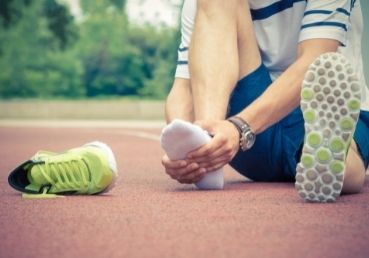How High-Impact Sports Can Cause Foot Injuries

Posted by Tony Mers
What Is a “High-Impact” Sport?
The term “high-impact” refers to the impact a sport or exercise has on the joints. They are sports that typically involve taking both feet off the ground at the same time, for example:
- Soccer
- Basketball
- Long-distance running
- Gymnastics
- Football
This is opposed to low-impact sports that involve keeping at least one foot on the ground, which impact the joints less. Swimming, walking, and cycling all fall under this category. High-impact sports get the heart rate up more quickly, improve bone density, and improve coordination.
How Can High-Impact Sports Lead To Foot Injuries?
As mentioned, high-impact sports, by definition, put more strain on the joints. This added pressure can lead to injuries in a number of ways:
- Increases how quickly stress injuries occur, like tendonitis
- Repetitive impacts can lead to stress fractures in the bones
- Parts of the feet may need to overcompensate, leading to injuries like plantar fasciitis
- Protective tissue wearing down, leading to a higher prevalence of osteoarthritis later in life
The intensity of the activity itself also makes injury more likely. Falls and other accidents are simply more likely in these settings, leading to more foot injuries.
How To Prevent and Treat Foot Injuries
Warm-Up and Cool-Down
Warming up before you work out helps increase blood flow to your muscles and loosen your joints. This helps increase flexibility and range of motion, decreasing the likelihood of injuries in the entire body, including the feet. Stretching after a cool down may also help prevent cramping.
Emphasize Arch Support
A set of shoes with proper arch support will help lessen the impact of your exercise as well as evenly distribute the force across your feet. This helps prevent repetitive stress injuries. Good shoes also improve athletic performance, helping you to successfully pull off maneuvers and avoid accidents that can lead to injuries.
TENS and EMS Treatments
Electrotherapy can help improve foot injuries in two ways. TENS treatments can help reduce the pain by targeting nerves in concentrated areas. EMS works with the muscles, strengthening them and restoring mobility. TENS conductive garments, such as conductive socks, help distribute treatments effectively throughout your foot.
SHARE:

